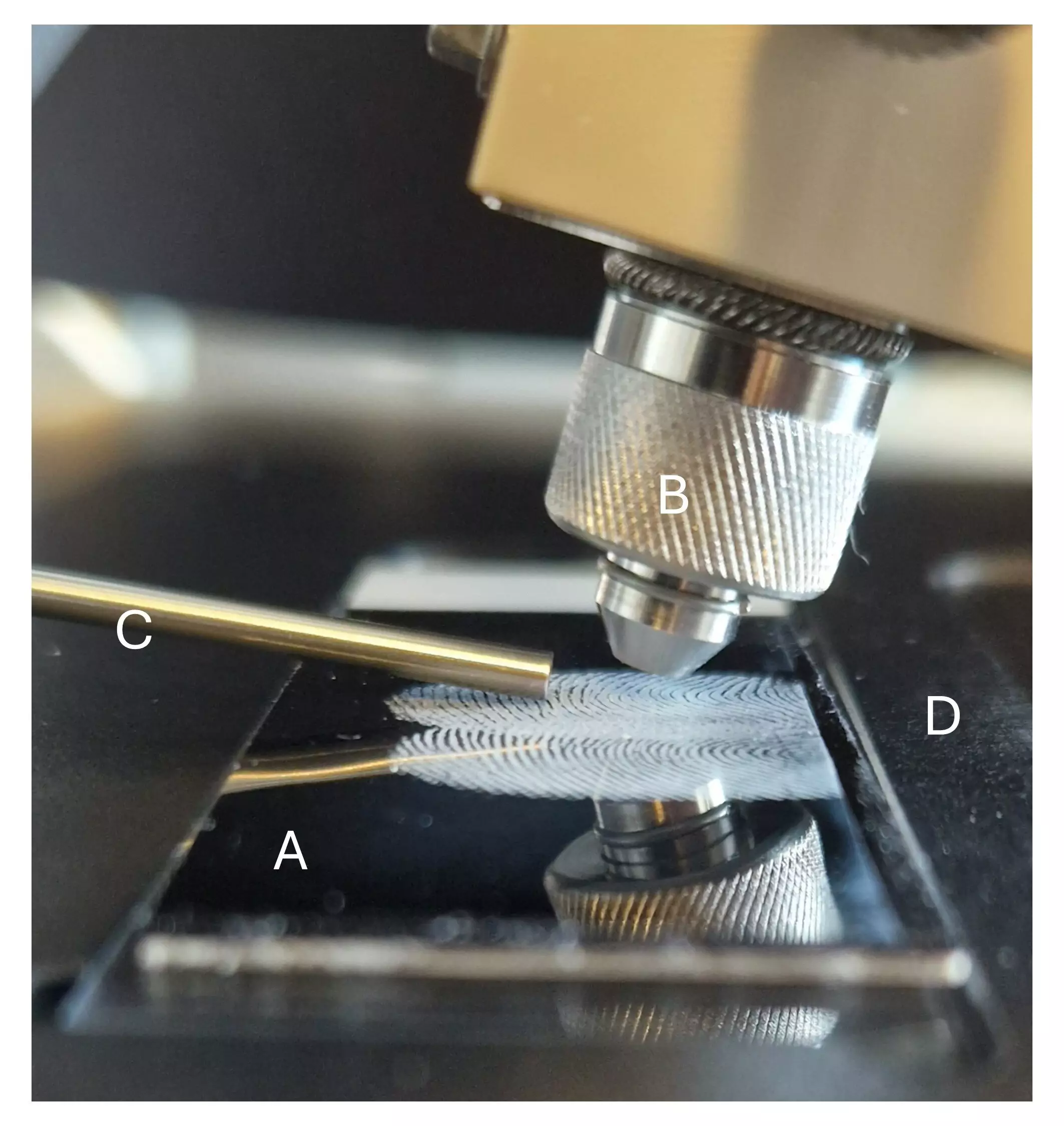The world of forensic science continually evolves, with new methods emerging to address the limitations of traditional techniques. A groundbreaking study from the Department of Forensic Medicine at Aarhus University in Denmark has introduced a revolutionary approach to fingerprint analysis using chemical imaging. By employing Desorption Electrospray Ionization Mass Spectrometry (DESI-MS), this method seeks to overcome critical challenges faced by forensic investigators and improve the quality and quantity of usable fingerprint evidence in criminal cases.
Danish police frequently utilize gelatin lifters for the retrieval of fingerprints at crime scenes. Unlike adhesive tape, gelatin lifters can effectively capture prints from diverse surfaces, including fragile materials such as peeling paint and complex objects like doorknobs. However, the reliance on traditional photographic methods to document these prints comes with several drawbacks. Most notably, conventional imaging struggles to effectively separate overlapping fingerprints, which are common in crime scenes. This often results in the unintentional discarding of critical evidence that could aid in investigations.
Furthermore, faint fingerprints that could provide essential clues are often lost due to insufficient detail captured by standard imaging methods. The Aarhus University study recognizes these hurdles and aims to present a solution that integrates seamlessly into existing forensic procedures, thereby enhancing the investigative process.
The innovative application of DESI-MS represents a significant advancement in forensic chemistry. This technique, formulated roughly two decades ago, allows scientists to analyze chemical compounds present within fingerprints. By employing a fine mist of methanol-solvent droplets, DESI-MS effectively releases and ionizes the chemical constituents found in the fingerprints. These compounds include a wide array of substances such as natural lipids, amino acids, and even trace elements reflecting the individual’s lifestyle or potential illicit activities.
Postdoctoral researcher Kim Frisch highlights the potential impact of this method, asserting that it not only could visually enhance fingerprint evidence but also chemically analyze it. With DESI-MS now adapted to work with gelatin lifters, the technique stands to revolutionize the way fingerprints are processed and understood in forensic contexts.
One of the most significant advantages of the DESI-MS method is its ability to separate overlapping fingerprints and enhance faint prints, addressing one of the biggest pain points in current forensic practices. This capability could dramatically expand the range of fingerprints that can be processed and evaluated from crime scenes, potentially increasing the amount of evidence available to law enforcement.
Although initial tests of the DESI-MS method were confined to laboratory conditions, subsequent tests on actual crime scene fingerprints—facilitated in collaboration with the National Special Crime Unit of the Danish Police—are underway. Continued research in this area shows promise, with the possibility of turning previously unusable prints into valuable forensic evidence that can aid in solving crimes.
Fingerprints are not merely unique identifiers; they contain a wealth of chemical information that can be leveraged for deeper forensic analysis. The study explores the potential for profiling individuals based on the chemical compounds found in their fingerprints. This could include detecting substances indicating drug use, exposure to harmful chemicals, or other lifestyle factors. Such detailed profiling adds a new layer of understanding to fingerprint analysis.
Current research efforts around the globe are examining various dimensions of this concept, exploring how fingerprints can reveal information about a person’s recent activities, habits, and even their demographic characteristics. The implications are profound; forensic scientists may ultimately be able to discern whether a person has consumed certain substances, thus adding critical context to criminal investigations.
As the research progresses, the collaboration between the Department of Forensic Medicine and the National Special Crime Unit is pivotal. The ultimate goal is to translate laboratory findings into practical applications that enhance crime scene investigations. There are still obstacles to overcome, particularly concerning the time required for chemical analysis. Currently, scanning and analyzing samples via DESI-MS can be a labor-intensive process, but the anticipation is that as the method matures, it could be implemented in high-stakes cases, such as homicide or sexual assault investigations.
The research from Aarhus University reflects a notable leap forward in forensic science. The DESI-MS technique not only enhances the capability to analyze fingerprints but also broadens the scope of information that can be extracted from this vital evidence. As forensic methods continue to advance, they promise to significantly enrich the investigative toolkit available to law enforcement and forensic analysts alike.

